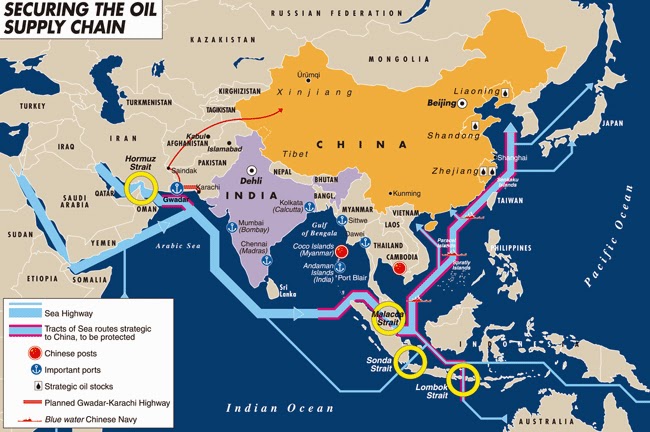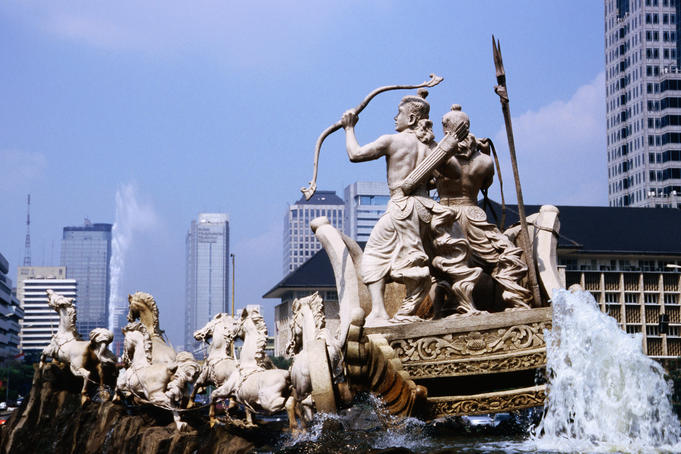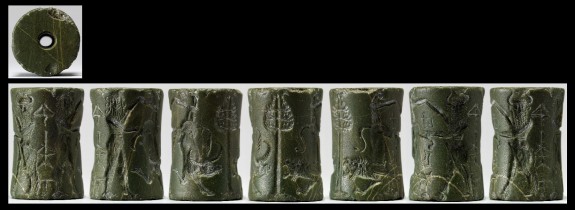http://www.tribuneindia.com/2013/20130807/nation.htm#15
See the list of sites in Hanumangarh District:
Locality Index: Archaeological Settlements, mostly in Sarasvati River Basin
RAJASTHAN: GANESHWAR PERIOD
DISTRICT: SIKARBaleshwar 27.44N - 75.51E
Balwar 27.35N - 75.38E
Baneti 27.48N - 76.07E
Banher 27.50N - 76.07E
Barnagar 27.33N - 76.07E
Basri 27.38N - 75.45E
Beed-Ki-Jodhi 27.36N - 76.09E
Bhabra 27.28N - 76.01E
Bhadwari 27.34N - 75.40E
Bhaikhri 27.34N - 76.07E
Bhainsalana 27.39N - 76.05E
Bhakhtawar-Ki-Dhani 27.51N - 76.06E
Bihar 27.52N - 75.57E
Biharipura 27.54N - 75.54E
Bhojpura 27.33N - 75.35E
Bhukha Bhar 27.37N - 76.10E
Buchara 27.33N - 75.58E
Burha 27.54N - 75.58E
Butholi 27.41N - 75.46E
Chardera 27.51N - 76.06E
Chaudhri-Ka-Nangal 27.53N - 76.07E
Chiplata 27.34N - 75.34E
Dariba 27.41N - 75.54E
Dilpura 27.50N - 76.04E
Ganeshar 27.40N - 75.49E
Ghata 27.35N - 75.51E
Hothoka (Mothoka) 27.49N - 75.05E
Hovra 27.55N - 75.59E
Jodhpura 27.55N - 75.59E
Khera 27.55N - 75.59E
Kolyara 27.44N - 75.00E
Malawali Dhani 27.43N - 75.46E
Mando 27.44N - 75.00E
Nimki 27.35N - 75.36E
Pandtpur 27.36N - 76.03E
Paragpura 27.36N - 76.03E
Partheri 27.33N - 75.45E
Purani Partheri 27.37N - 76.09E
Rajnotha 27.36N - 76.10E
Ranasar 27.44N - 75.43E
Ram Jhalara 27.35N - 76.09E
Sarohi 27.43N - 75.44E
Sedoda 27.39N - 75.49E
Somanya-Ki-Baoli 27.32N - 75.56E
Thikria 27.32N - 76.06E
Thoi 27.32N - 76.45E
UTTAR PRADESH (HARAPPAN PERIOD)
DISTRICT: SAHARANPUR
Asan Wali 30.02N - 77.36E
Badgam 30.00N - 77.32E
Baundki 30.04N - 77.37E
Bazidpur 30.03N - 77.36E
Chhajpura 29.59N - 77.37E
Chhapar Heri 29.54N - 77.30E
Chilhera 30.02N - 77.39E
Chuehti Shekh 29.54N - 77.43E
Daudpur 30.05N - 77.36E
Fahtepur (Gujar) 29.53N - 77.32E
Fahtepur Jat 29.53N - 77.32E
Ghana Khandi 30.04N - 77.36E
Hulas Khera 29.42N - 77.22E
Kabirpur 30.05N - 77.38E
Kailaspur 29.59N - 77.39E
Krishni 29.55N - 77.30E
Mohiuddinpur 30.00N - 77.38E
Mohiuddinpur 30.00N - 77.28E
Matki Jharauli 30.04N - 77.35E
Nawan Gaon 29.53N - 77.26E
Piki 30.02N - 77.36E
Pilakhni 30.01N - 77.29E
Pinjaura 29.56N - 77.33E
Rangel 29.56N - 77.40E
Reri Malakpur 29.55N - 77.29E
Salepur 29.56N - 77.21E
Sarkari Sheikh 30.00N - 77.36E
Sherpur (Gujar) 29.53N - 77.39E
Tikrol 29.44N - 77.22E
DISTRICT: MEERUT
Alamgirpur 29.00N - 77.30E
Gulistanpur 28.30N - 77.30E
HARYANA (HARAPPAN PERIOD
DISTRICT: AMBALA
Dukheri 30.16N - 76.53E
DISTRICT: KURUKSHETRA
Ratta Kher Khuram 30.07N - 76.27E
DISTRICT: KARNAL
Bahola 29.48N - 76.46E
Bindrala 29.29N - 76.35E
Dikadla 29.13N - 77.04E
Jalmana 29.35N - 76.44E
Maudi 29.47N - 76.46E
Pujam 29.51N - 76.55E
Urlana Khurd 29.22N - 76.43E
DISTRICT: JIND
Balu 29.40N - 76.22E
Bata (Rani Ran) 29.43N - 76.19E
Dhakal 29.35N - 76.10E
Ghatouli 29.11N - 76.23E
Jind (Bir Band Ban) 29.19N - 76.19E
Kalait 29.40N - 76.16E
Kharal-3 29.42N - 76.03E
Pauli 29.05N - 76.28E
Ritauli 29.25N - 76.30E
DISTRICT: SONIPAT
Chhapra 29.07N - 76.32E
Garhwal 29.11N - 76.32E
DISTRICT: ROHTAK
Baliana 28.53N - 76.43E
Lohat 28.32N - 76.50E
DISTRICT: BHIWANI
Mitathal 28.52N - 76.11E
DISTRICT: HISSAR
Banawali 29.36N - 75.25E
Barki 29.17N - 75.46E
Bhirrana 29.32N - 75.32E
Chanat-1,2,3 29.14N - 75.55E
Chimun 29.40N - 75.40E
Garhi 29.04N - 76.07E
Gular Wala 29.43N - 75.46E
Hansi 29.04N - 76.59E
Kharar 29.08N - 75.54E
Kirtan 29.08N - 75.33E
Kunal 29.38N - 75.43E
Masaudpur 29.14N - 76.00E
Mirchpur 29.18N - 76.11E
Nathwan 29.07N - 75.35E
Pali-I 29.08N - 76.05E
Rajpura 29.11N - 76.07E
Rakhi Garhi 29.17N - 76.07E
Ratta Theh 29.44N - 75.45E
Satrod Khurd 29.06N - 75.47E
Sisai - III 29.10N - 76.00E
Siswal 29.13N - 75.30E
PUNJAB (HARAPPAN PERIOD
DISTRICT: AMRITSAR
Vadalan 31.49N - 76.48E
DISTRICT: KAPURTHALA
Bhatrpura Kalan 31.01N - 75.31E
Domeli 31.20N - 75.46E
DISTRICT: JULLUNDAR
Dhogri 31.23N - 75.40E
DISTRICT: ROPAR
Kotla Nihang 30.56N - 76.32E
Kotli 30.53N - 76.29E
Ropar 30.58N - 76.31E
DISTRICT: PATIALA
Dharm Heri 30.07N - 76.19E
Gheora -12 30.07N - 76.16E
Nagwan 30.07N - 76.23E
Sasi 30.07N - 76.20E
DISTRICT: SANGRUR
Budan 30.31N - 75.46E
Jandali 30.38N - 75.51E
Rohira 30.38N - 75.50E
Kalian 30.35N - 75.43E
Moholi 30.38N - 75.45E
DISTRICT: LUDHIANA
Kanganwal 30.51N - 75.56E
Malaud 30.38N - 75.57E
Sanghol 30.47N - 76.24E
Talwara 30.55N - 75.44E
DISTRICT: FARIDKOT
Inewala Theh 30.33N - 75.25E
Raja Sirkap 30.39N - 74.46E
DISTRICT: FEROZPUR
Amiwala Theh 30.20N - 75.15E
DISTRICT: BHATINDA
Ali-Da-Theh 30.20N - 75.20E
Alipur Mandran 29.50N - 75.28E
Bagliean-Da-Theh 29.56N - 75.29E
Chhoti Mansa 29.59N - 75.26E
Dale Wala-1,2 29.50N - 75.25E
Dalewan 30.02N - 75.33E
Gumi Kalan 29.59N - 75.33E
Hassanpur 29.59N - 75.33E
Hirke -I 29.44N - 75.22E
Karanpura 29.52N - 75.23E
Lakhmir Wala 29.52N - 75.22E
Lallian Wali 29.52N - 75.20E
Lalu Wala 29.59N - 75.27E
Naiwala Theh 29.50N - 75.30E
RAJASTHAN (HARAPPAN PERIOD)
DISTRICT: HANUMANGARH
Baror 29.10N - 73.20E
Bhagwansar 1 29.22N - 73.53E
Bhagwansar 2 29.23N - 73.53E
Binjor -I 29.14N - 73.07E
Binjor 3 29.00N - 77.12E
Bugian 29.22N - 73.38E
Chak-11 29.19N - 73.36E
Chak-15/3 29.19N - 73.36E
Chak-21 29.16N - 73.33E
Chak 43 29.10N - 73.29E
Chak 50 29.10N - 73.29E
Chak 71 29.14N - 73.17E
Chak 72/3 29.11N - 73.19E
Chak 75 29.11N - 73.18E
Chak 80 29.12N - 73.15E
Jogiason Chak -1 29.10N - 74.45E
Kalibangan 29.29N - 74.08E
Karoti 29.10N - 74.52E
Mallawala-Tioba
Mathula 29.14N - 74.34E
Motasar Tibba -1 29.09N - 73.23E
Motasar Tibba -2 29.09N - 73.27E
Nohar 29.10N - 74.45E
R.D -92/89 29.10N - 73.04E
Sardar Garh -2 29.23N - 73.45E
Sher Pura 29.10N - 75.15E
Sothi 29.11N - 74.50E
Tarkhana Wala Dera 29.14N - 73.14E
GUJARAT (HARAPPAN PERIOD)
DISTRICT: KUTCH
Chitrol 23.24N - 70.40E
Desalpur 23.29N - 69.10E
Dholvira (Kotadi) 23.58N - 70.12E
Gadhwaliwadi 23.30N - 69.03E
Gunthai 23.28N - 69.09E
Jatavadar 23.45N - 70.40E
Kanthkot 23.29N - 70.29E
Kerasi 23.40N - 70.44E
Khakhra Dera 23.34N - 70.29E
Khari-Ka-Khanda 23.27N - 70.19E
Khedoi 23.03N - 69.57E
Kotada Bhadli 1 23.22N - 69.26E
Kotada Bhadli 2 23.22N - 69.26E
Kotada 23.17N - 70.06E
Kotadi 23.58N - 70.12E
Kotara-Juni-Karan 24.00N - 69.45E
Lakhapar 23.33N - 70.28E
Lakhpat 23.50N - 68.47E
Morvo 23.50N - 70.42E
Narapa 23.34N - 69.05E
Nenu-Ni-Dhar 23.51N - 69.44E
Pirwada 23.20N - 70.00E
Pabunath 23.38N - 70.31E
Rampara (Vekera No Timbo) 23.30N - 70.45E
Ramvav 23.32N - 70.28E
Samaghoga 22.55N - 69.40E
Selari 22.42N - 70.37E
Surkotada 23.37N - 70.50E
Todio 23.05N - 69.55E
Vada 23.34N - 69.03E
DISTRICT: BANASKANTHA
Atarnes 23.40N - 71.20E
Benap 24.05N - 71.25E
Jhekada 23.50N - 71.25E
DISTRICT: MEHSANA
Dudka 23.32N - 71.46E
Kuwar 23.32N - 71.37E
Lalara 23.33N - 71.47E
Mahudi 23.30N - 72.45E
Pirozpur 23.30N - 71.43E
Bolera 23.30N - 71.45E
Khandia 23.32N - 71.45E
Manverpur 23.35N - 71.54E
Dhanora 23.31N - 71.55E
Dantisana 23.30N - 71.54E
Sushiya 23.28N - 71.53E
Ervada 23.25N - 71.53E
Panchasar 23.25N - 71.49E
Panva 23.23N - 71.49E
Sibpur 23.33N - 71.46E
Sujnipur 23.53N - 72.05E
DISTRICT: JAMNAGAR
Ambaliala 22.56N - 69.44E
Bedwarka 22.28N - 70.26E
Bhayakhakharia 22.10N - 71.50E
Chanderwara 21.51N - 69.24E
Kotda 23.14N - 70.21E
Lakhan Timbo 22.29N - 70.26E
Mulpadar 21.56N - 69.44E
Saudevalio 22.00N - 69.44E
Tarana 22.43N - 70.27E
DISTRICT: JUNAGAH
Savani 20.58N - 70.28E
DISTRICT: RAJKOT
Bhut Kotada 22.35N - 70.45E
Dad 22.50N - 70.55E
Dhutapur 21.50N - 71.00E
Dumaini 21.45N - 70.20E
Dungarpur 22.71N - 71.31E
Gadhada -1 22.26N - 70.36E
Gadhada -2 22.26N - 70.36E
Gadhada -3 22.26N - 70.36E
Jhikri 21.55N - 70.50E
Jodhpur 22.40N - 70.53E
Karmar 21.50N - 70.53E
Khankhara Bela -1 22.29N - 70.36E
Khankhara Bela -2 22.29N - 70.36E
Khareda-No-Timbo 22.05N - 70.48E
Lukhela 21.50N - 70.00E
Malgodh 22.00N - 70.34E
Padar 21.59N - 70.50E
Pal 22.18N - 70.43E
Pithad 21.57N - 70.44E
Pithadia 21.48N - 70.49E
Rajathali 21.55N - 70.01E
Taraghada 21.50N - 71.28E
Timaram 21.53N - 70.30E
Vadasada 21.47N - 70.30E
Vegadi 21.47N - 70.30E
DISTRICT: AMRELI
Bhatiwadi 21.45N - 70.50E
Dhankanio -2 21.47N - 70.55E
Dhuapino 21.27N - 71.49E
Vadera 21.36N - 71.06E
DISTRICT: BHAVNAGAR
Gheolo Bund 21.58N - 71.27E
Khodiyar 21.24N - 71.09E
Lakhavav 21.30N - 71.55E
Valpura 21.57N - 71.42E
DISTRICT: SURENDRA NAGAR
Chashiana 22.25N - 71.50E
Goni Timbo 22.27N - 71.55E
Kaero Timbo 22.24N - 71.55E
Khanpur 22.32N - 71.58E
Rangpur 22.20N - 71.55E
Samadhiala 22.19N - 71.42E
DISTRICT: AHMEDABAD*
Bhimnath 22.15N - 71.55E
Chhabasr 22.46N - 72.16E
Devganga 22.18N - 71.50E
Hadmatala 22.30N - 72.03E
Kanasutaria 22.47N - 72.16E
Lothal 22.31N - 72.15E
Metal Maha No Timbo 22.47N - 72.14E
Talwandi No Timbo 22.45N - 72.20E
DISTRICT: KHERA
Kerisima No Timbo 22.28N - 72.31E
Sai No Tikro 22.28N - 72.31E
DISTRICT: BHARUCH
Manar 21.42N - 72.47E
DISTRICT: SURAT
Navagam 21.16N - 72.56E
CHOLISTAN DESERT, PAKISTAN
Bhawalpur area : archaeological sites in the Cholistan or Rohi desert, along 300 miles of the dry bed of the Hakra River (10-15 mile-wide-strip), the stretch of the Sarasvati river in Bahawalpur province adjoining the Rajasthan State (Marusthali or Thar desert)
(414 sites including Ganweriwala Ther, Gamuwali, Dunkkian, Wariyal, Sandhanawala) [cf. Rafique Mughal, Ancient Cholistan, 1997]
Principal Sites:
Arabian Sea
Bet Dwaraka island
Gulf of Khambat (Cambay)
Prabhas Patan (Somnath)
Rojdi 21.50N 70.45E
Lothal 22.31N 72.15E
Marusthali
Jodhpura 27.31N 76.05E
Ganeshwar 37.40N 75.51E
Rann of Kutch
Kotada Timba, Kotadi
(Dholavira) 23.58N 70.12E
Surkotada 23.37N 70.50E
Pabumath 23.38N 70.31E
Desalpur 23.29N 69.10E
Sarasvati River
Gamanwala
Ganweriwala Ther 28.50N 71.10E
(Cholistan or Rohi Desert)
Khirsara, Khera-sara (Netra)
Tarkhanawala-dera 29.14N 73.14E
Sandhanawala-thera
(Near Fort Abbas)
Mohenjodaro
(Island between W. Nara
Loop-- Sarasvati river and Sindhu river)
Kalibangan 29.29N 74.08E
Banawali 29.37N 75.23E
Rakhigarhi 29.17N 76.07E
Alamgirpur 29.00N 77.30E
Hulas 29.42N 77.22E
Rohira 30.38N 75.50E
Chandigarh 30.45N 76.47E
Ropar 30.58N 76.31E
Godavari riverDaimabad 19.31N 74.42E
Sindhu riverGharo Bhiro (Nuhato)
Allahdino
Bala Kot
Amri
Chanhujo-daro
Nindowari-damb
Lohumjo-daro
KotDiji
Naru-waro-daro
Jhukar
Mohenjo-daro
Nausharo
Sibri-damb
Pirak
Rahman-dheri
Tarakai Qila
Harappa
OmanRa’s al-Hadd
Ra’s al-Junaya
Persian GulfTell Abraq
Bahrain
Failaka
Tigris-Euphrates riversUr
Tello
Umma
Susa
Nippur
Kish
Tell-Asmar (Eshnunna)
Luristan
Tell as-Suleimani
Caspian SeaTepe Gawra
MakranTepe Yahya
BactriaShortugai
TurkmenistanAltin Tepe
http://www.hindunet.org/hindu_history/sarasvati/html/locality_index.htm![]() Ghaggar river flowing through Panchkula in Haryana in North India
Ghaggar river flowing through Panchkula in Haryana in North India![]() Ghaggar river, near Anoopgarh,Rajasthan in the month of September
Ghaggar river, near Anoopgarh,Rajasthan in the month of September![]() The site of Karanpura is between Kalibangan and Ganweriwala on the border of Haryana-Rajasthan, in Hanumangarh district.
The site of Karanpura is between Kalibangan and Ganweriwala on the border of Haryana-Rajasthan, in Hanumangarh district.![]()
Vedic River Sarasvati, a reconstruction.








 Swapan Dasgupta
Swapan Dasgupta




















 The site of Karanpura is between Kalibangan and Ganweriwala on the border of Haryana-Rajasthan, in Hanumangarh district.
The site of Karanpura is between Kalibangan and Ganweriwala on the border of Haryana-Rajasthan, in Hanumangarh district.







 Beads from the site of Ksar Akil (Lebanon) found closely associated with the skeleton of an early modern human girl dating to between 39-41 thousand years ago.
Beads from the site of Ksar Akil (Lebanon) found closely associated with the skeleton of an early modern human girl dating to between 39-41 thousand years ago.

.jpg)














